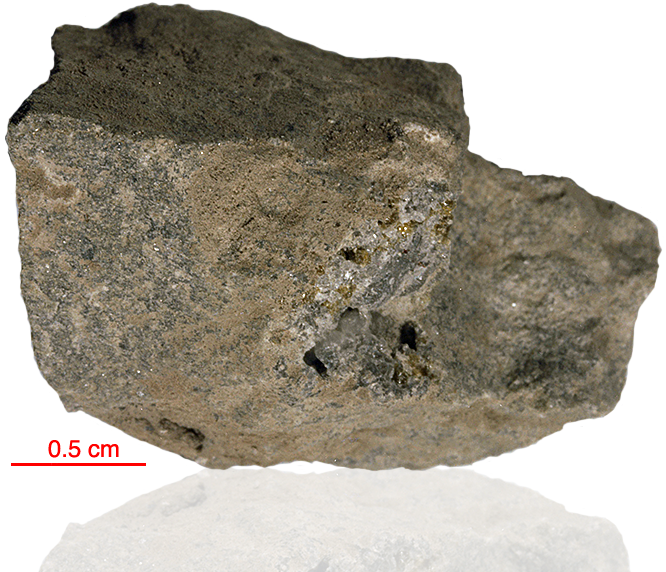
Fact sheet
65785 is a crystalline feldspathic impact melt rock containing a coarse-grained pink spinel troctolite clast. Our thin section shows the troctolite only. Modally the last contains 65% plagioclase (An98), 30% olivine (Fo85) and 5% Mg-Al spinel. The pink spinel occurs as one large crystal (1 mm). Irregular plagioclase grains (0.1–1 mm) are surrounded by one large olivine grain. Minor phases are pyroxene, ilmenite, armalcolite, rutile, metallic iron, troilite, whitlockite, farringtonite and K-feldspar.
The sample weighed 5.16 grams before analysis. The impact melt has been dated at 3.83 ± 0.02 billion years (Ar/Ar).
Further details of this and other Apollo samples are here: http://curator.jsc.nasa.gov/lunar/
The Apollo 16 landing site was in the hilly region around Descartes crater in the lunar highlands. The landing spot was chosen to allow the astronauts to gather geologically older lunar material (Descartes Formation and the Cayley Formation) than the samples obtained in the first four landings, which were in or near lunar maria.
The mission lasted 11.1 days, with a stay on the lunar surface of 71 hours. The crew were on the lunar surface for 20.2 hours during which they traversed approximately 27 kilometers and collected approximately 96 kilograms of samples.
Apollo 16 was launched on 16 April 1972.






